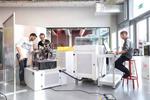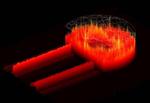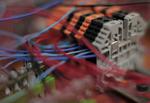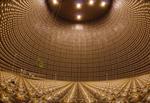Other

“The UK’s first quantum accelerometer for navigation has been demonstrated by a team from Imperial College London and M Squared. Most navigation today relies on a global navigation satellite system (GNSS), such as GPS, which sends and receives signals …

“Renewable solar power can be harnessed using solar cells, which are made of materials called semiconductors. In a solar cell, electrons are generated when photons, or packets of light, are absorbed by semiconductors and released as high energy electrons. However …

“To tame chaos in powerful semiconductor lasers, which causes instabilities, scientists have introduced another kind of chaos. High-powered semiconductor lasers are used in materials processing, biomedical imaging and industrial research, but the emitted light they produce is affected by instabilities …

“Scientists found that relatively slow electrons are produced when intense lasers interact with small clusters of atoms, overturning current theories. Intense laser cluster interactions occur when small clusters of atoms, nanometres (billionths of a metre) in size, are struck with …

“The new Transient Air System Rig (TASR) was designed and built by Dr Aaron Costall and his team from Imperial College London’s Department of Mechanical Engineering. The researchers hope it will help makers of large off-road and freight vehicles …

“Research focused on upscaling of energy-storage devices was presented by Dr Billy Wu and Professor Jason Riley in an IMSE Lunchtime Seminar last week. The Institute for Molecular Science and Engineering (IMSE) co-ordinates a range of integrated activities to bring …

“For thousands of years, animals and plants have been used for clothing, from cotton, to wool, to silk from silk worms. In the 20th and 21st centuries, other methods, such as genetic engineering and novel foods, have turned creatures’ bodily …

“A space mission to test how objects fall in a vacuum has released its first results, providing an improved foundation for Einstein’s famous theory. The first results of the ‘Microscope’ satellite mission were announced this week by a group …

“By forcing light to go through a smaller gap than ever before, researchers have paved the way for computers based on light instead of electronics. Light is desirable for use in computing because it can carry a higher density of …

“Researchers have shown how to write any magnetic pattern desired onto nanowires, which could help computers mimic how the brain processes information. Much current computer hardware, such as hard drives, use magnetic memory devices. These rely on magnetic states – the …

“Imperial scientists have successfully taught robots to perform a challenging brain technique only previously mastered by a handful of humans. Whole-cell patch clamp electrophysiology, or whole-cell recording (WCR), is the gold-standard technique for studying the behaviour of brain cells called …

“New results show a difference in the way neutrinos and antineutrinos behave, which could help explain why there is so much matter in the universe. The results, announced today by the international team of scientists including large group from Imperial …
